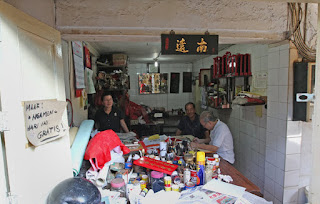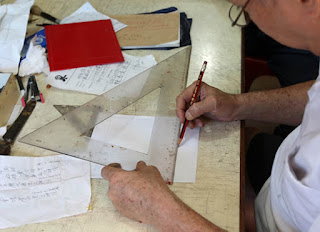In a small alley in Petak Sembilan, Jakarta, Sanjaya (59) draws a pattern of crisscrossing lines on a piece of paper on a table strewn with ink pots and brushes. Then with a brush and ink from concentrated squid ink, his hand dances carefully, shaping letter after letter.
Calligraphy is the art of esthetic handwriting that dates back to thousands of years ago. The Chinese had known calligraphy since they invented letters in the days of Emperor Huáng Dì of the Han dynasty. A calligrapher is called Shu Fá Jia, literally "Book Writing Expert". The shu fá jia writes using the same letters everybody uses. The only difference is the esthetics and technique required to shape the letters.
Chinese calligraphy is used to express classical poems, life philosophy, and words of wisdom, so that the artwork is not only used to convey well wishes but condolences as well, and some are even believed to contain magical powers. The price of a piece of calligraphy art varies depending on the text and the artist. Prices range from hundreds of thousands rupiah to over ten million.
Sanjaya produces three types of calligraphy artwork. First, Cao Phai, meaning Shop Signboard, the name of a shop inscribed on a piece of board or paper. The second is Wuan Lìén, meaning Word of Condolences. Inscription on a Wuan Lìén usually reads "Fortune and Age Shall Depart." The third is Shen Phai, meaning God Board. The inscription on the board reads "All The Corners of The Earth Worship The Dragon God, The Native And Descendants of Landlords Worship The God of Fortune".
Each carries philosophical element as a remainder for all whose gaze rests on the inscribed art. (Jakarta Globe/ Afriadi Hikmal)










